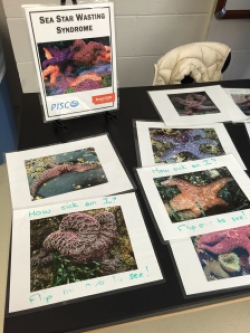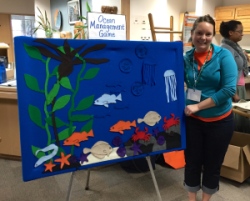I’ve spent a lot of time on the Henry B. Bigelow. Or at least it feels that way. The familiar chirps and beeps pinging at all hours, the frigid temperature of the dry lab, the way the marine smell lingers on the back deck on a humid day and the salty ocean air makes my skin feel dry and sticky at the same time. I know exactly what clothing to bring for the various jobs I will have, how sleep in my athwartships bunk in rough weather, and that (unless I’m really unlucky) the satellite Internet will allow me to iMessage my friends and family back on land. I’ve been enjoying boat life for years now and I find so much comfort in the little routines.
After departing another ship following a trying journey this spring, I spent a long time thinking about why I couldn’t embrace the quiet weeks at sea that I usually love. Usually spending time offshore offers perspective, fresh air and space to think through ideas and goals and potential plans, but on that trip I spent most of the time wishing I was back at home. Back home at…work? Instead of embracing the break from daily life in Oregon, I was overcome with anxiety about the progress I wasn’t making towards my degree. Perhaps the jumpy response of the ship to rough weather translated directly to my restlessness?
But when my friend and colleague asked me if I was ready to head back to sea this summer on the Bigelow, I didn’t hesitate to tell her “yes”, I was ready. How could I not be – I love sailing on the Bigelow and working as a passive acoustics observer. It is amazing to listen to the whistles, clicks, and buzzes of cetaceans around us in real-time. One of my non-acoustician friends used to describe my job as “eavesdropping on whales”, which, sounds a bit silly, but really is a pretty accurate description of what I do on the boat. The days are long, but most of them are good.
In previous years I would balance my time in the lab with breaks outside to try and spot the animals I spent so many hours listening to. But this year the cruise nears conclusion and my tube of sunscreen is still full. Furiously trying to keep up with my academic responsibilities has limited the number of dolphins I’ve seen, but will allow me some peace returning to Oregon knowing that I won’t have weeks of ignored emails to attend to.
There is a quiet isolation that develops with time spent as a graduate student in academic research. Digging deeper into our own holes of scientific obsession, our theses wouldn’t be viable projects if someone else was already working on the same questions. I am aware of this at school, but the camaraderie of being surrounded by other students takes away a little of the loneliness. But at sea, secluded in my cabin to focus on my project, it feels more pronounced. A couple days ago I was analyzing a recording and identified a useful sound clip. Excitedly I considered who I could share my news with…but quickly realized that probably no one else would be quite as thrilled to look at a spectrogram of wind noise.
The next morning I woke up before my alarm and, not wanting to disturb my sleeping roommate, I got ready quickly and went to begin the daily set-up routines for our equipment in the dry lab. Ready to go half an hour early, I stood out on the back deck to watch the sunrise. And there, unhurried and under-caffeinated but still feeling accomplished from my thesis progress the day before, I finally reconnected with the sublime peace of being at sea.
This summer has been an experiment in re-adjusting my expectations, but I think I’m figuring out how to balance and prioritize. While I spend most of my hours staring at screens, moving between my laptop and the acoustics workstation in the dry lab, I keep a walkie-talkie on the desk just in case someone spots an animal close to the ship; it’s a lot harder to see a blue whale from my office in Oregon.




















































